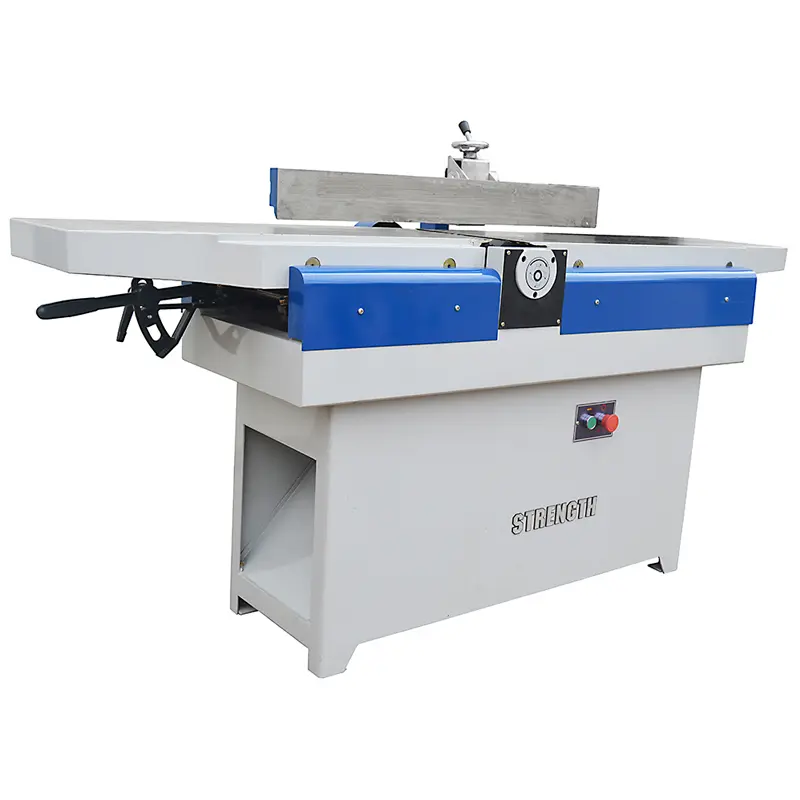1. Structure and working principle of planer
The planer is mainly composed of a bed, a workbench, an electric motor, a planer and a feeding system. The bed is the support structure of the planer, and the workbench is the working platform for cutting wood. The electric motor provides power and transmits the power to the planer blade through the transmission system, causing the planer blade to rotate at high speed. The feed system is used to control the feed speed and planing depth of the wood. The operator places the wood to be processed on the workbench, adjusts the feeding system, controls the feeding speed and planing depth of the wood, and then starts the motor to make the planer rotate at high speed to cut the surface of the wood. With the movement of the workbench and the feeding system, the planer cuts out a thin layer of a certain depth on the wood surface, removing unevenness and impurities to make the wood surface smooth and flat.
2. Application of planer
Furniture manufacturing: Planers play an important role in furniture manufacturing. They can process furniture wood in large quantities to make the surface smooth and flat, providing a high-quality foundation for subsequent assembly and decoration.
Architectural decoration: In the field of architectural decoration, planers can be used to process wooden decorations and building components, such as wooden floors, door frames, window frames, etc., to make their surfaces smooth and regular.
Wood structure construction: Planers are used in wood structure construction to process components to make their shapes and sizes more precise, improving the overall strength and stability of the building.
Wood art production: In wood art production, the planer can be used to carve the texture and pattern on the wood surface to increase the decorativeness of the wood products.
3. Advantages and limitations of planer
Advantage:
1. Efficient: The planer is electric driven and has a fast planing speed, which is suitable for processing large quantities of wood.
2. Accuracy: The planer is equipped with a feed system that can accurately control the feed speed and planing depth of the wood, making the planing results more accurate and consistent.
3. Large-scale application: Planers are suitable for large-scale processing of wood, especially in fields such as furniture manufacturing and architectural decoration.
limitation:
1. The equipment is larger in size: Compared with handheld electric planers or carpenter planes, planer equipment is larger in size and less portable, making it suitable for use in fixed workplaces.
2. Limited planing depth: Since the planer is a desktop design, the planing depth is limited.
Post time: Apr-29-2024

